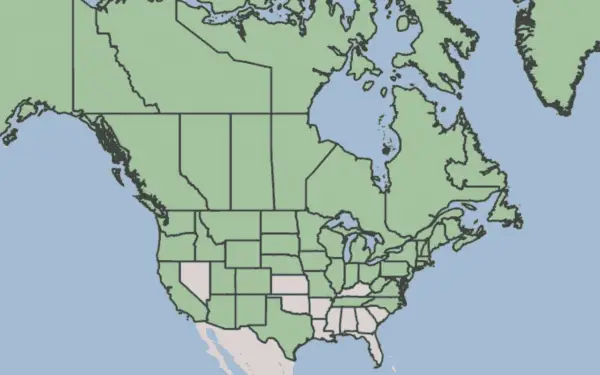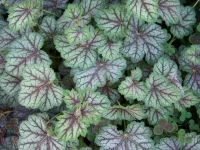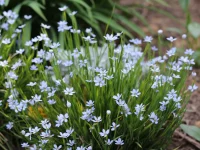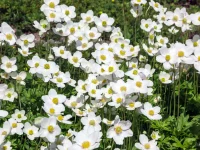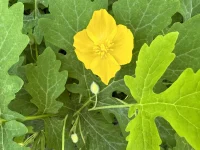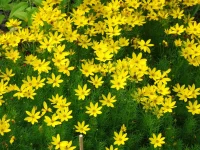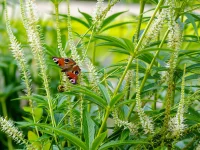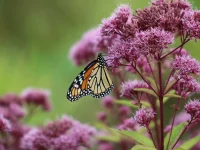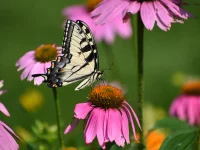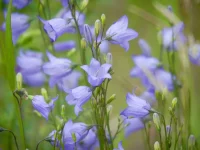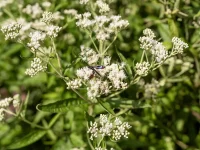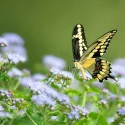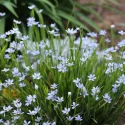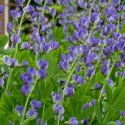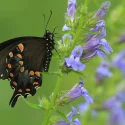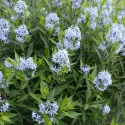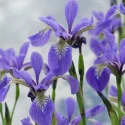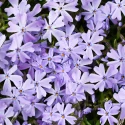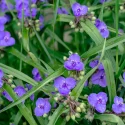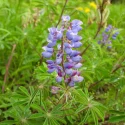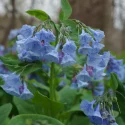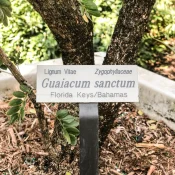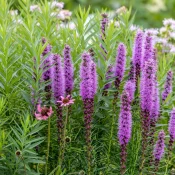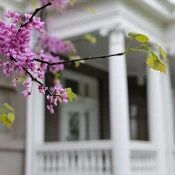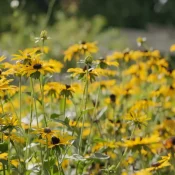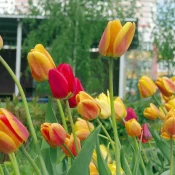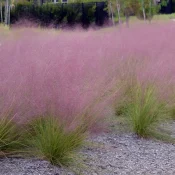Bluebell Bellflower
Bluebell Bellflowers are one of North America’s iconic wildflowers for a reason: they are delicately stunning, especially when planted in groups. And their bloom time is incredible: June to September! They are also very easy to grow, thanks to their ability to thrive in a wide range of soils and sunlight. Plant them alongside other natives that are white or yellow to help their color shine. Scroll on for planting tips.
- Part Sun
- Short (under 3')
- Summer flowers, Fall flowers
- Multi-season flowers
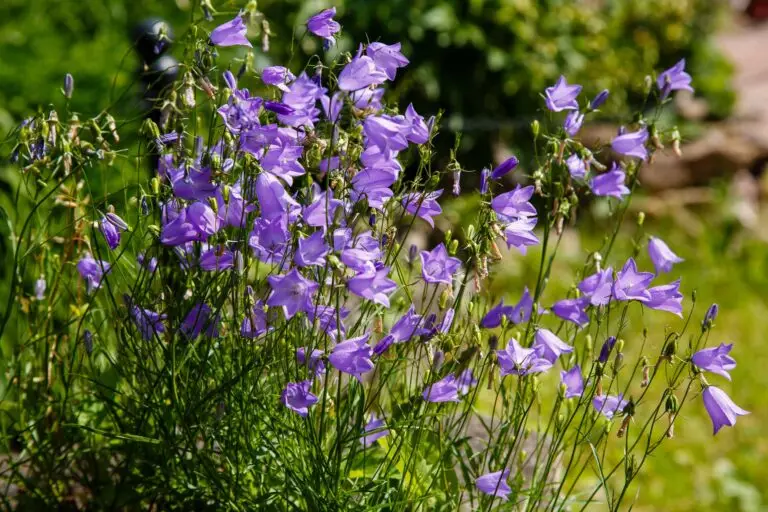
Bluebell Bellflowers are delightful flowers—native to a wide swath of North America (see below for a map)—that offer beauty and gardening ease, making them an ideal choice for beginner gardeners.
Bluebell Bellflower is a tough little species that doesn’t mind rocky soils, alpine conditions, and dry spots. As the USDA says, “The plants are much hardier than they look.” They are hardy in U.S. zones 3-6 and can grow in sun to part shade in medium to dry soils.
Their one Achilles-heel is sticky, hot summers; they definitely prefer the cooler regions of North America. (You may be able to grow them in shade further south; if you try, let us know how it goes).
Bluebell bellflowers are perfect plants for the Pacific Northwest, Mountain West, Upper Midwest, and Northeast. They love mountains and have been recorded growing at 12,000 feet altitude.
They are a stunning soft periwinkle color that mixes gracefully with just about any color that’s already in your garden, from roses to yellow asters to magenta coneflowers to lavender bee balm. They will bloom off and on between June and September in most places.
Here’s your guide to growing Bluebell Bellflowers in your outdoor spaces.
What are the benefits of planting native Bluebell Bellflowers?
There are so many benefits to planting native plants like this one. Some benefits include:
- Super low maintenance: Bluebells need minimal care to thrive. They are known for popping up in the randomest of spots—in rocky areas or between sidewalk cracks.
- Comes back year after year: this is a perennial, or a plant that comes back year after year from the same roots. If happy, they will also re-seed themselves and spread. So plant once and enjoy for years!
- Easy to grow from seed: you can have a patch of Bluebells for under $5!
- Feeds native pollinators: Bluebell bellflowers provide native pollinators, including rare native bees, with valuable nectar.
- Gorgeous flowers. Beauty matters! A gorgeous landscape with native flowers lifts spirits. Plant a patch of Bluebells and see for yourself.
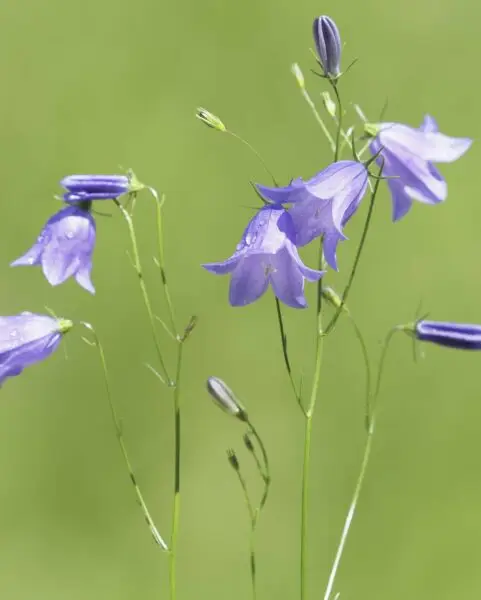
The many names of Bluebell Bellflowers
While we’re calling it ‘Bluebell’ here, this plant has many common names. A common name is the name passed down through generations to refer to a particular plant. This plant also goes by Bluebell Bellflower, Bluebell Of Scotland, Harebell, Common Harebell, Lady’s Thimble, Witches’ Thimble, and Witches’ Bells.
All these common names make the singular Latin name so helpful! Look for the Latin name Campanula rotundifolia to ensure you’ve found this plant.
Where are Bluebell Bellflowers native?
It’s hard to find a plant that has a larger range! You can find Bluebell Bellflowers from Alaska to Maine. Almost everyone in the cooler parts of North America can happily plant this native flower.
Bluebell Bellflower has such a huge range because it’s a “circumpolar” native species, or a plant that grows around the world in the Northern Hemisphere (source.) You’ll also find Bluebells in Scotland, Finland, etc.
What are good places to plant Bluebell Bellflower?
In the garden, try Bluebell Bellflowers in full sun to part shade in medium to dry soil. The individual plants tend to be short-lived but will re-seed themselves if happy.
They usually start blooming in late spring to early summer, but if you have multiple plants, some of them will sporadically bloom throughout the summer, even into early fall.
Bluebell Bellflowers are great in the following landscaping spots:
- Edges of lawns
- In rock gardens (pair it with wild stonecrop for a pretty chartreuse+lavender combo)
- Garden borders, cottage gardens, and meadows
- In containers!
- In large groups—this is a plant that looks nice in masse
- Mixed in with other flowers (especially white and yellow ones)
- In hotter areas, grow underneath trees and shrubs
Note that if you grow Bluebell Bellflower from seed, it typically takes them until their second year to bloom.
Is Bluebell Bellflower the same as Virginia Bluebells?
No. Bluebell Bellflower and Virginia Bluebell are two different plants. (I know, so confusing!) These pictures help explain the differences.
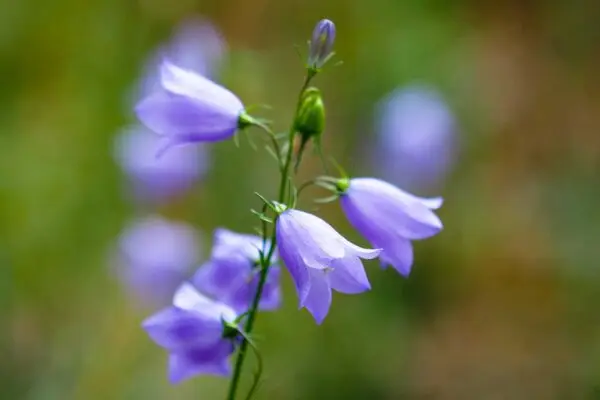
Bluebell Bellflower
Campanula rotundifolia
- Huge native range: all of Canada and most of the United States
- Long bloom-time: spring through summer
- Tall-ish: 1-3′
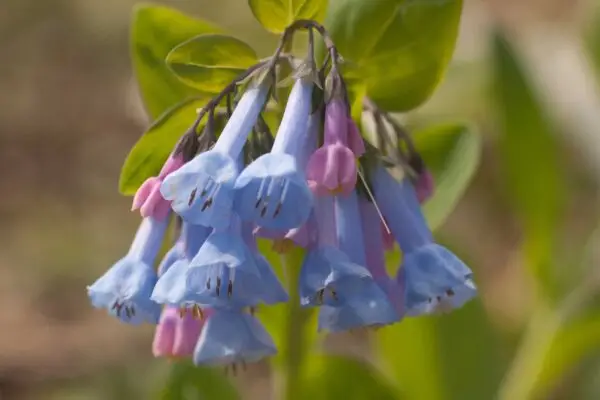
Virginia Bluebells
Mertensia virginica
- Native to eastern seaboard: From Nova Scotia to Georgia
- Blooms in the early spring
- Short: 12-18″
Worried about getting these mixed up?
We hear you—it is confusing. To make sure you’re looking at Bluebell Bellflower, using the Latin name is your best bet. If you’re looking for Bluebell Bellflower, ensure the plant tag says Campanula Rotundifolia.
What are good pairings for Bluebell Bellflower?
Bluebell Bellflowers are best paired with other native perennials that like the same conditions but flower at different times. This ensures your garden always has something in bloom and the pollinators always have something to eat. They also look great alongside white and yellow natives—the blue + yellow + white combo makes Bluebells pop in the garden.
Great pairings include springtime flowers like False Blue Indigo and Golden Alexander; summer favorites are Culver’s Root, coneflowers, coreopsis, and Joe-Pye Weed; and fall-time bloomers like native asters and goldenrods.
Native flowers for spring
Native flowers for summer
Native plants for fall
Feeling a little overwhelmed picking native plants?
Gardening should be fun and not feel like a botany exam. If you’re feeling overwhelmed as you plan your native garden, check out our inspiration guides! They are all written to help get you gardening (and not worrying.)
To make garden planning easy: Three-Color Native Gardens and Single-Plant Native Gardens are great resources.
Or, if you’re looking to focus on a specific butterfly or bird (or keep deer away!), visit Best Native Plants for Birds, Best Native Plants for Butterflies, and Deer-Resistant Native Plants.
Remember: native plants plant themselves. If they can do it, so can we.
And now, to make it even easier—here are some ideas on where you can find Bluebell Bellflower.
Where can I find Bluebell Bellflower for my yard?
Where can I find seeds and plants?
Finding native plants can be challenging (we partly blame Marie Antoinette.) To make it easier, we’ve assembled four sourcing ideas.
Native Nursery List
300+ native nurseries makes finding one a breeze
Online Native Plant Sellers
We've included 100+ online resources to help
Society Plant Sales
Every state has a native plant society; find yours
Online Communities
Local Facebook groups are a great plant source
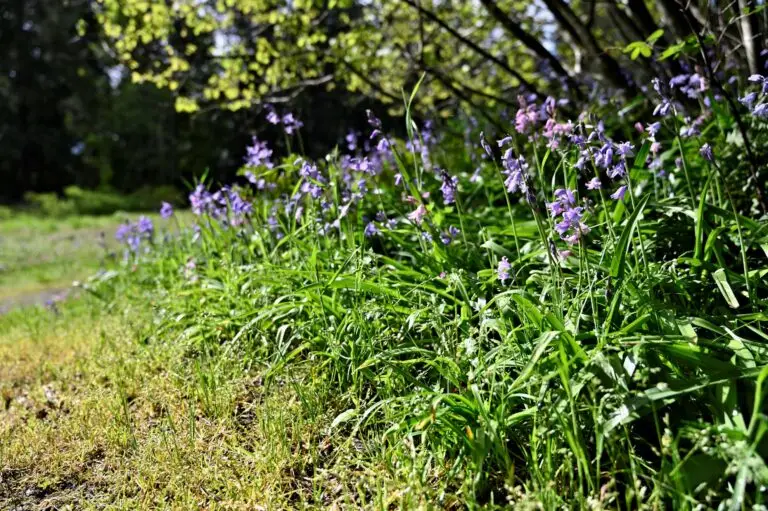
In conclusion, Bluebell Bellflowers are gorgeous native flowers that look best planted in groups to let their delicate beauty shine. They are so easy to plant and come back year after year. Because they are native, they don’t need any fussy fertilizers or irrigation systems—after the first year of getting established, they are happy with just rain. Bluebells are perfect for almost anyone’s garden in North America—from the Northwest to the Northeast. Plant a patch and don’t forget to tag us on Instagram so we can join the ‘like’ party. Happy planting!
Sources
- Lady Bird Johnson Wildflower Center, Bluebells
- Brooklyn Botanic Garden, Native Perennials: North American Beauties. (1996), 70.
- Nelson, Gil. Best Native Plants for Southern Gardens: A Handbook for Gardeners, Homeowners, and Professionals, (2010).
- Harstad, Carolyn. Go Native! Gardening with Native Plants and Wildflowers in the Lower Midwest. (1999), 209-210.
- Missouri Botanical Garden, Campanula rotundifolia
- U.S. Forest Service, Harebell
- Prairie Moon Nursery, Campanula rotundifolia Harebell
- Lady Bird Johnson Wildflower Center, Campanula rotundifolia (Bluebell bellflower)
- Holm, Heather. Restoring The Landscape With Native Plants, “Harebell ~ Campanula rotundifolia Pollinators & Floral Visitors”
